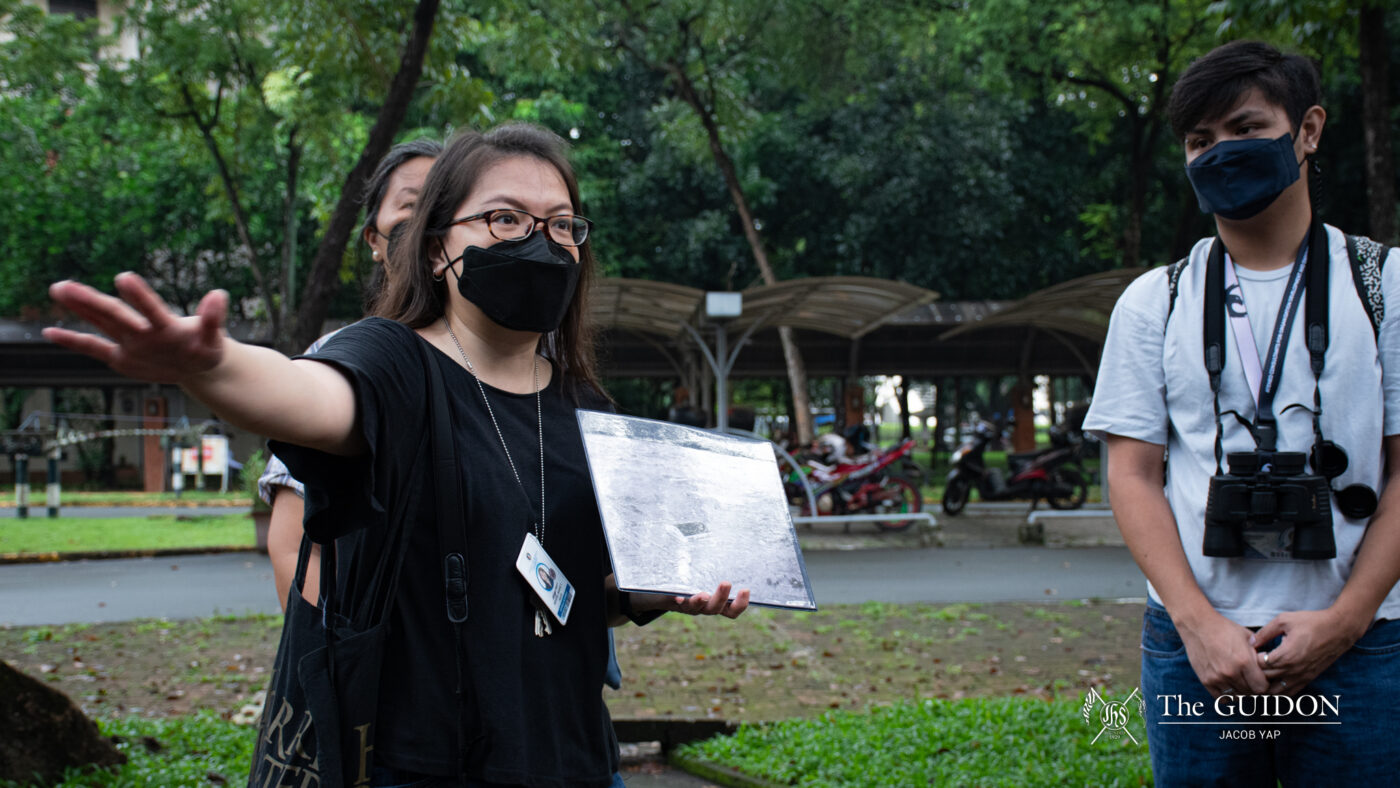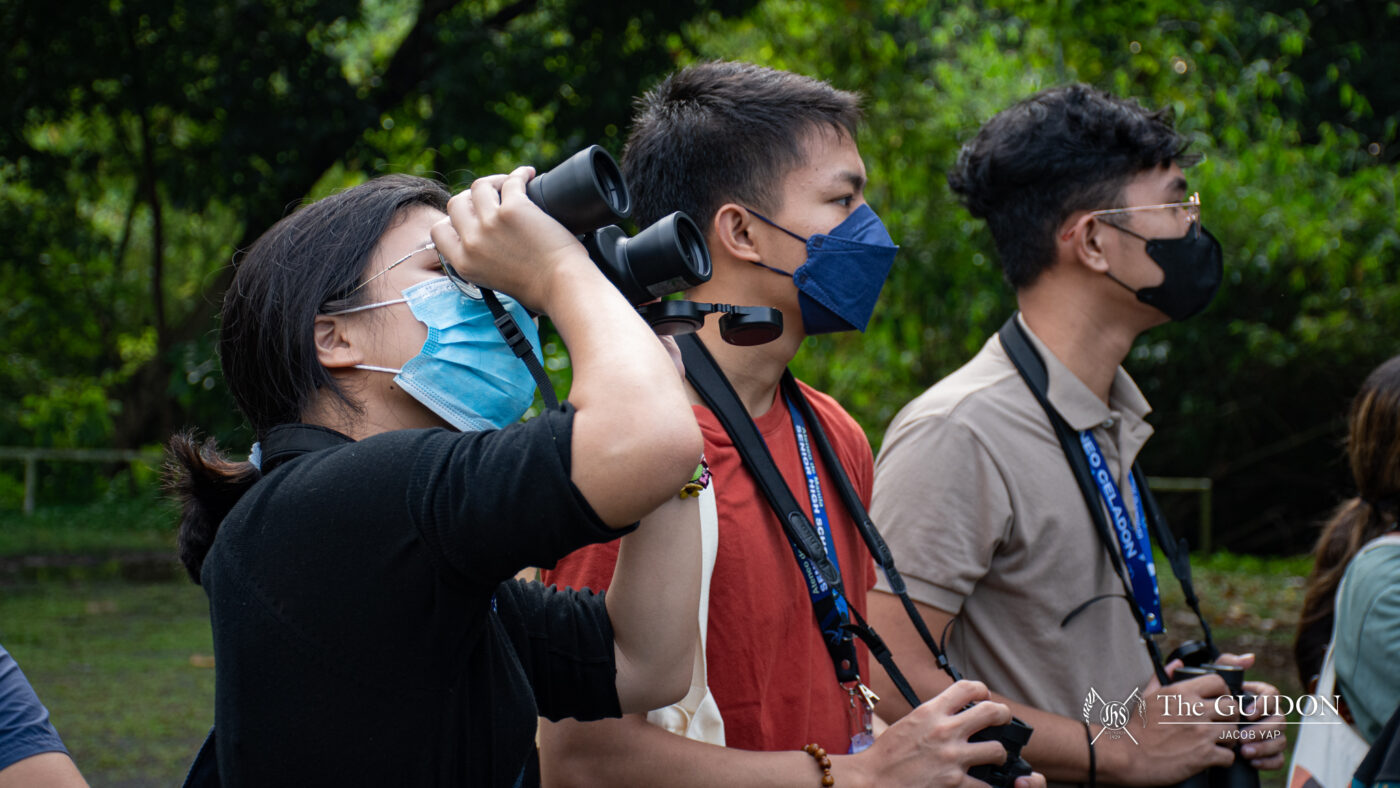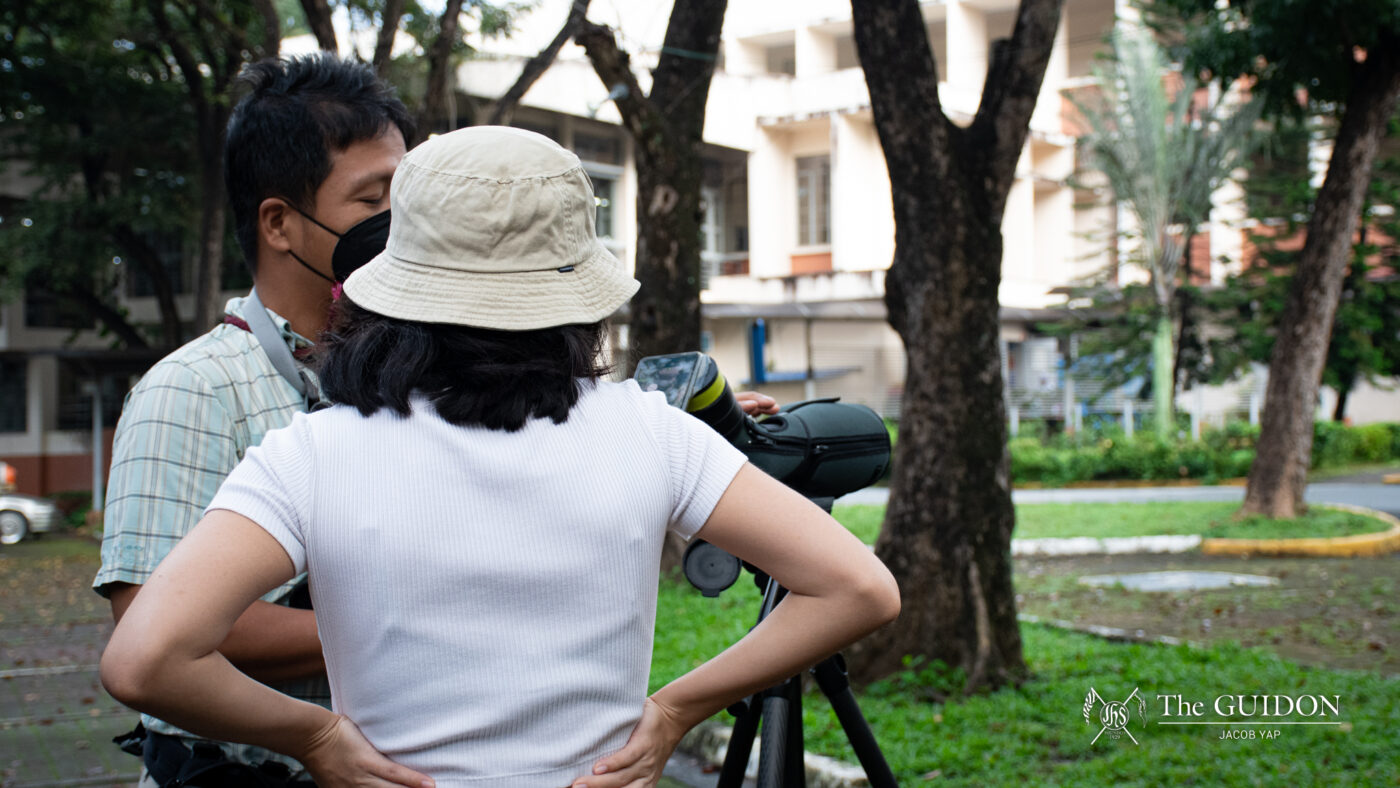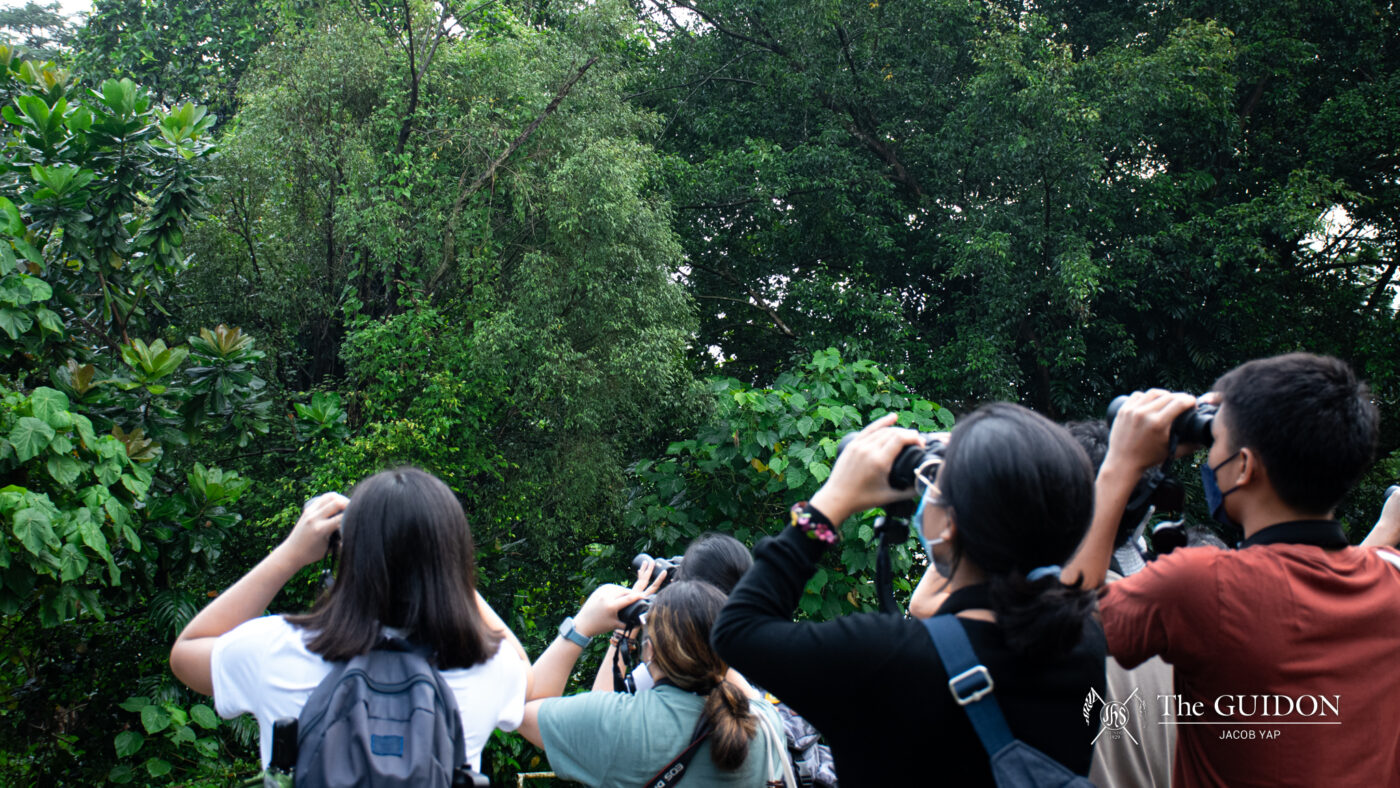TO DE-STRESS from academic life and explore the green spaces on campus, the Ateneo Wild revived its monthly Nature Walk initiative to introduce the Loyola Schools community to the University’s rich wildlife and biodiversity.
Biology Department Instructor Trinket Constantino, Ateneo Institute of Sustainability (AIS) Program Officer Nina Castro, and AIS Program Manager for Campus Sustainability Abigail Favis toured 10 to 12 participants on the Nature Walk, which runs for one to two hours.

Each attendant is lent a pair of binoculars to observe the features of the University wildlife like the campus’ living and nonliving organisms that “catch [the] eyes and ears,” according to Favis and Constantino.
According to Constantino, the Ateneo’s current wildlife population includes 87 bird species, 54 butterfly species, 12 reptile species, eight amphibian species, four bat species, and 86 native tree species. She explains that constant monitoring and contributions from community citizen scientists also help in discovering more species on campus such as rare fungi, insects, plants, and spiders.

By observing nature on campus, Favis and Constantino hope that the Nature Walk participants would realize the singular importance of campus biodiversity in the University. Through this newfound appreciation for urban biodiversity, they hope that the Nature Walk also enables the LS community to acknowledge nature’s beauty within the middle of Katipunan’s congestion.
The Ateneo Wild also worked with the Arete Sandbox Residency program’s Fine Arts and Communication Department to create printed and social media posts in Instagram, Facebook, and Twitter. These posts highlighted the importance of urban nature spaces and urban biodiversity and their role in making the city “liveable and beautiful.”
Moreover, the Ateneo Wild and the AIS also collaborated on the Ateneo Wild Coloring Book Series, illustrating the campus’ urban wildlife, now sold on the Ateneo University Press’ Lazada and Shopee pages. Taken together, initiatives like this help promote the value of the University’s rich flora and fauna.

To boost more appreciation for campus biodiversity, the Ateneo Wild plans to work more closely with other nature enthusiast groups including the University of the Philippines Wild and University of Santo Tomas Wild. They also mentioned that they plan to open these Nature Walks to participants outside of the Ateneo.
“We need a change in perspective. Instead of seeing urban biodiversity as ornamental and disposable, we should recognize that they are important components of our infrastructure and should be managed to maximize the ecosystem services we get out of them,” said Constantino.







